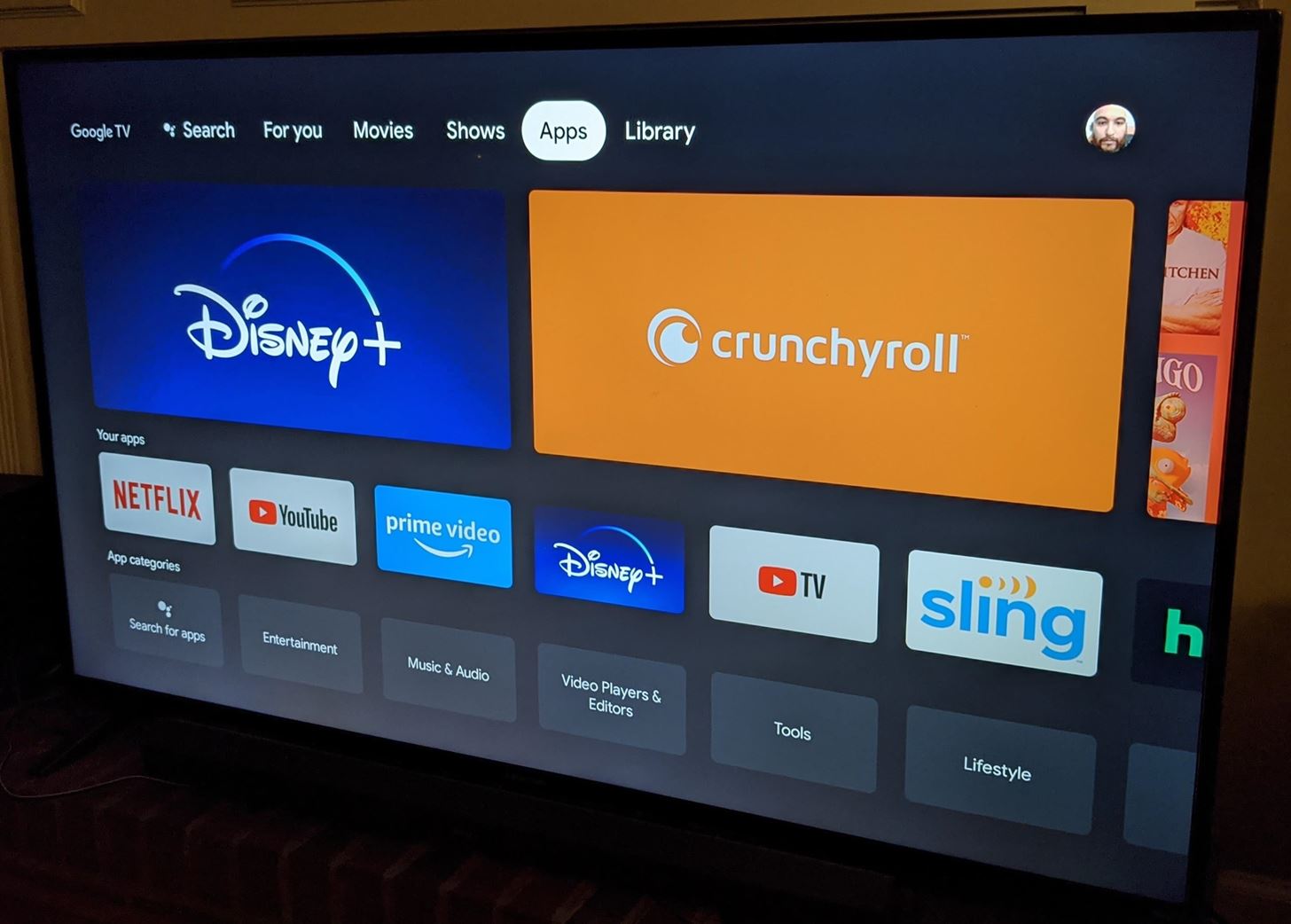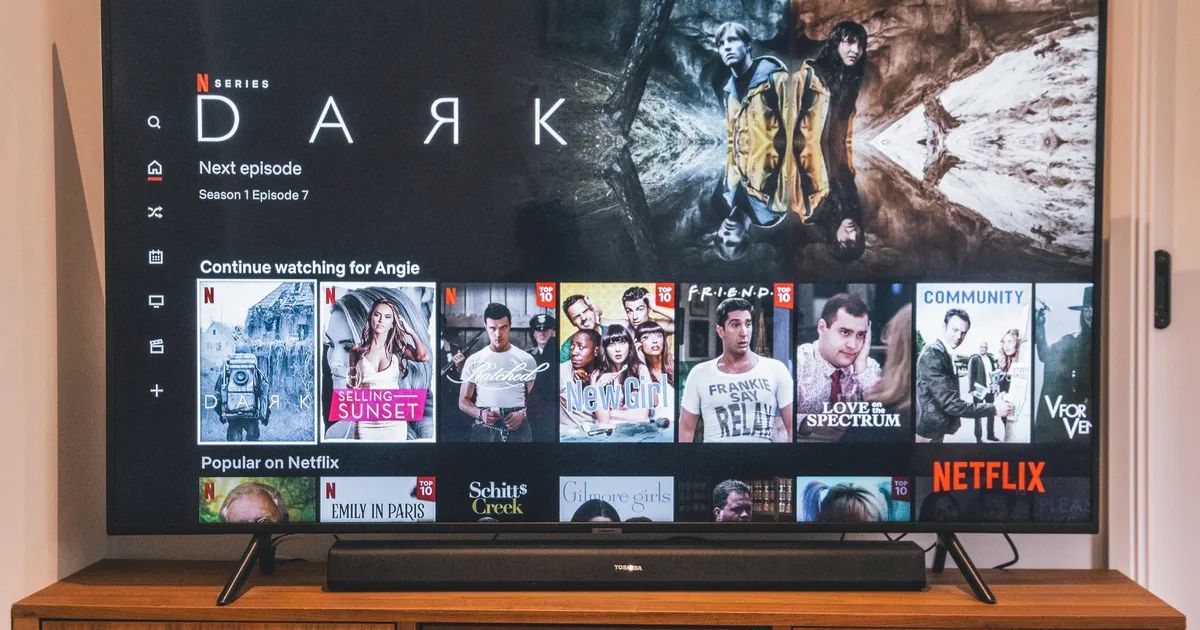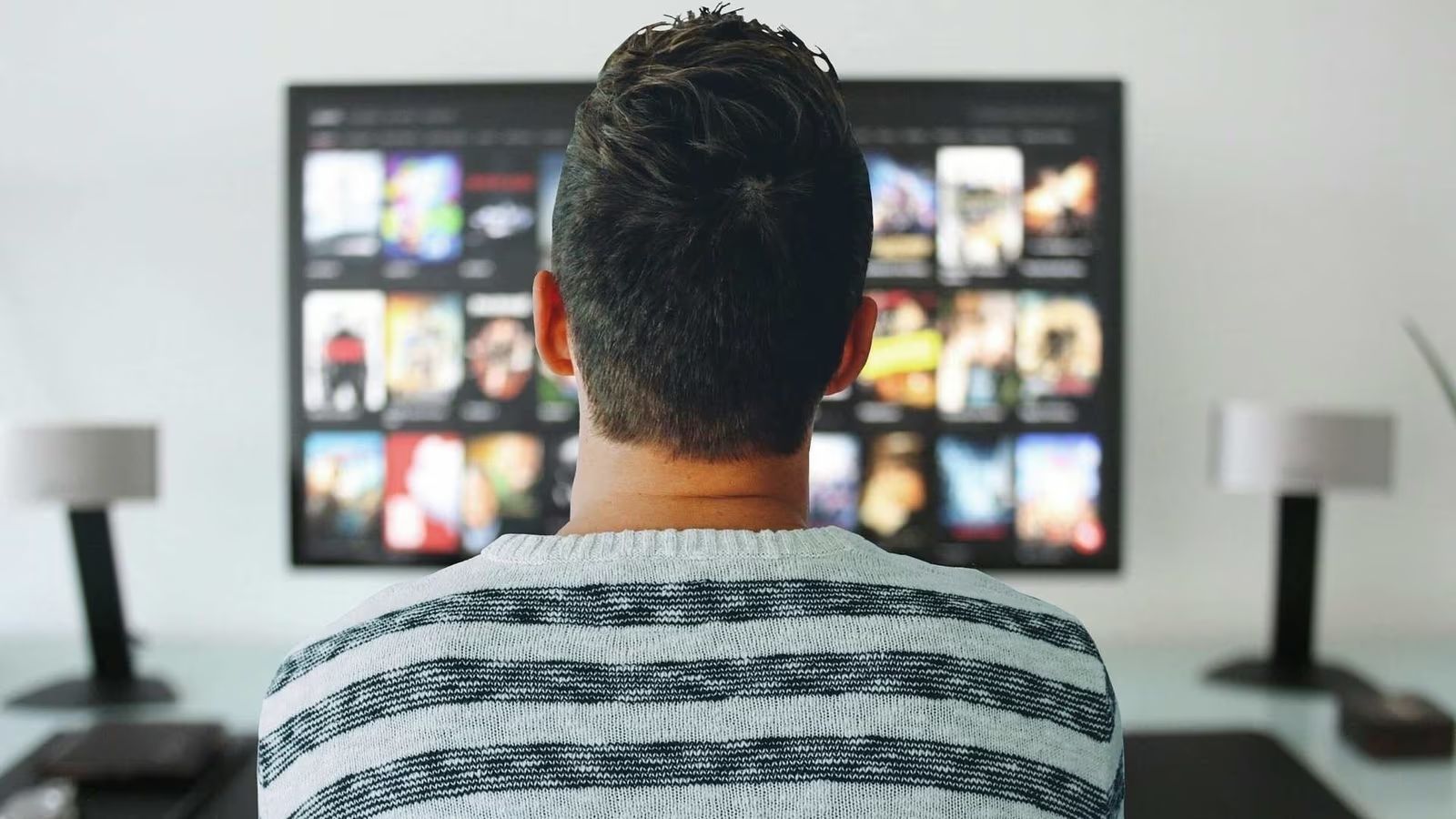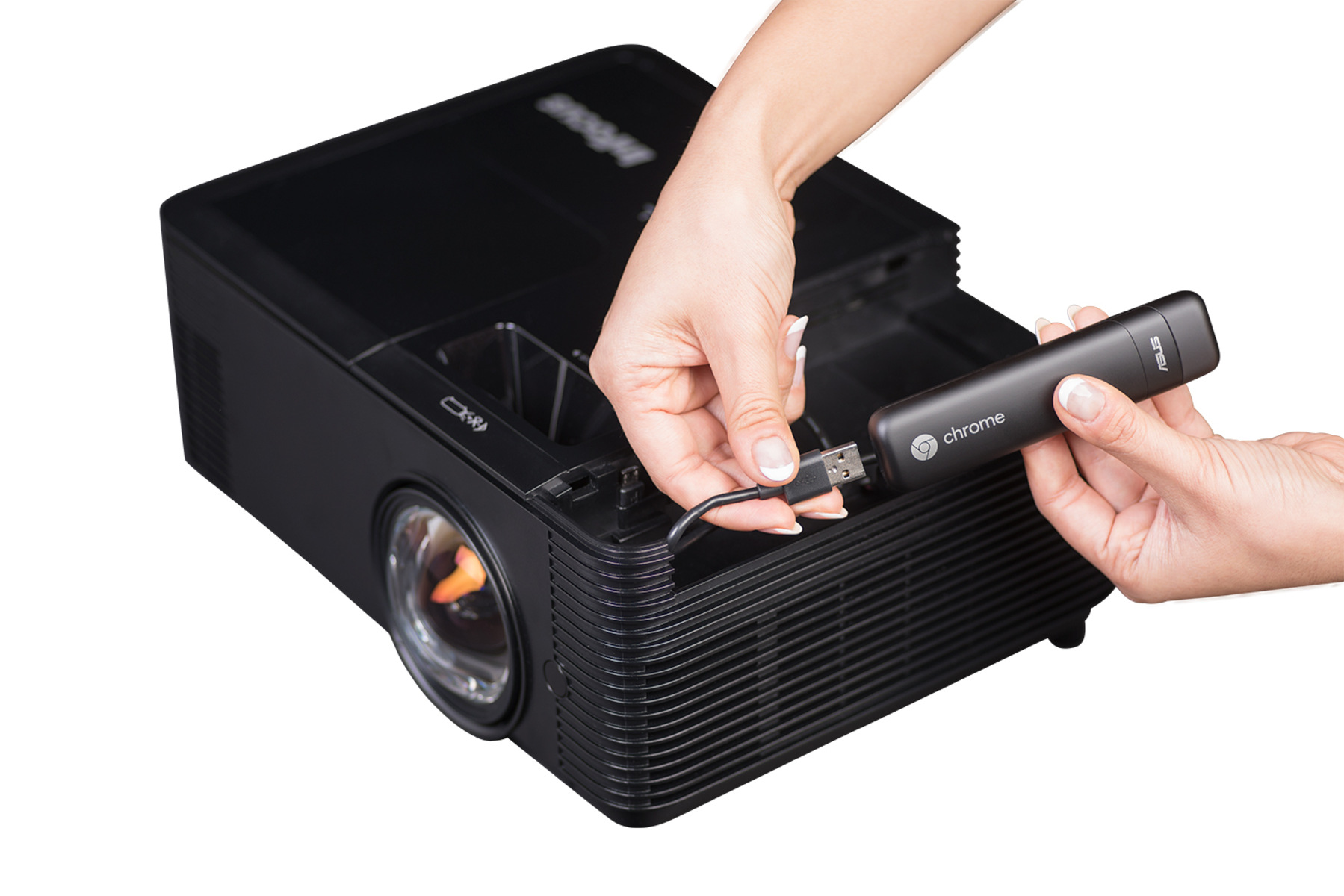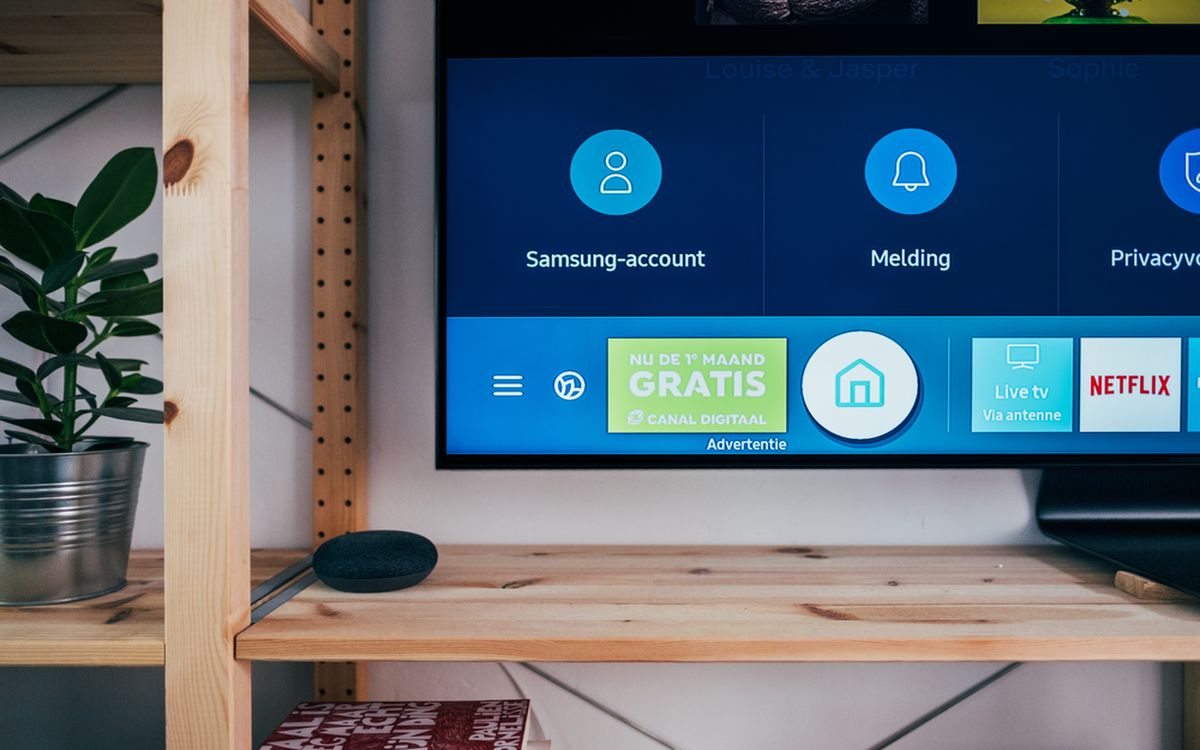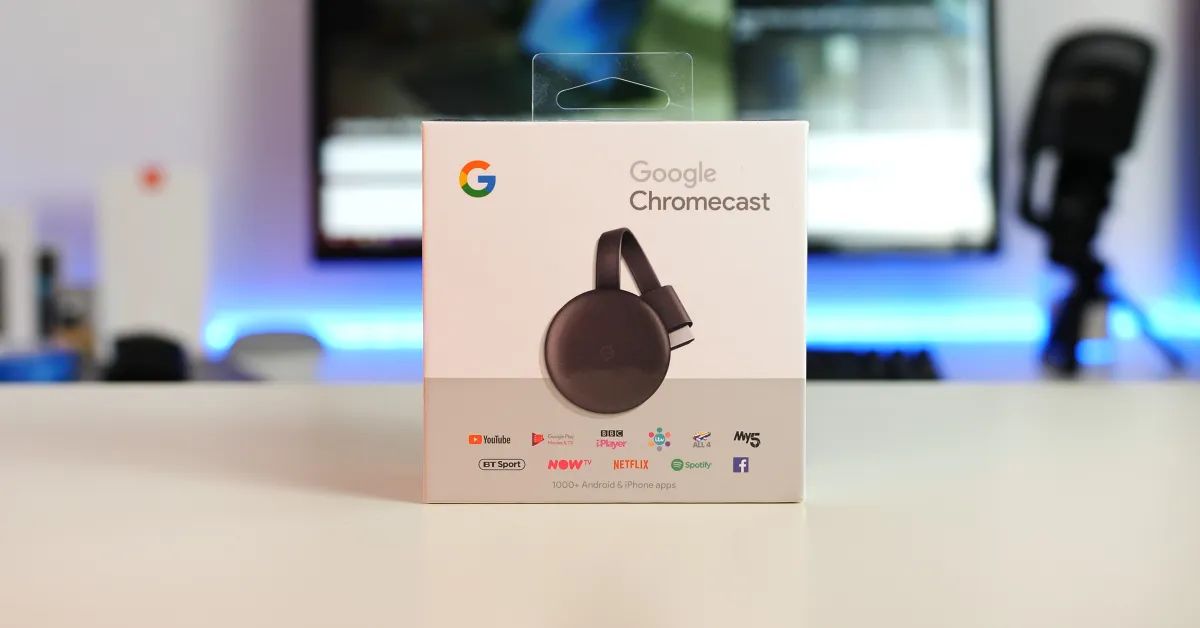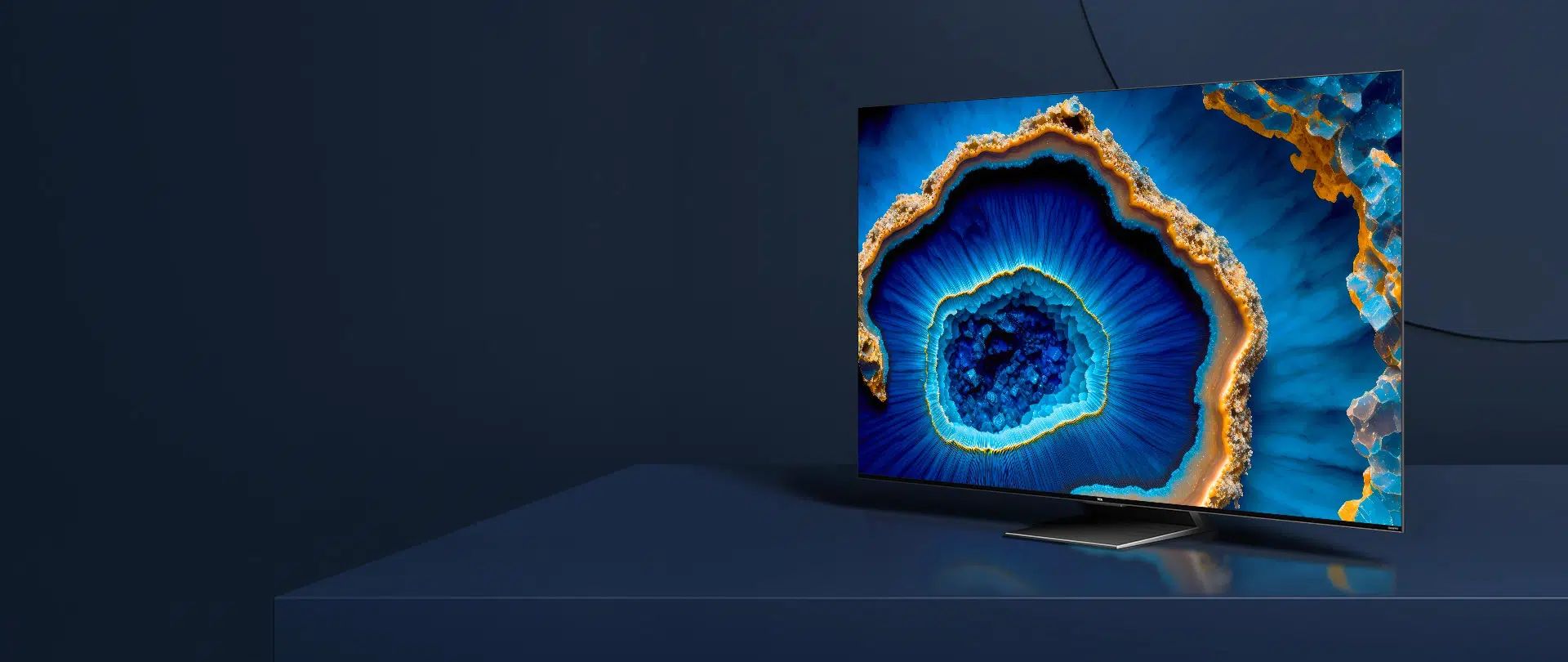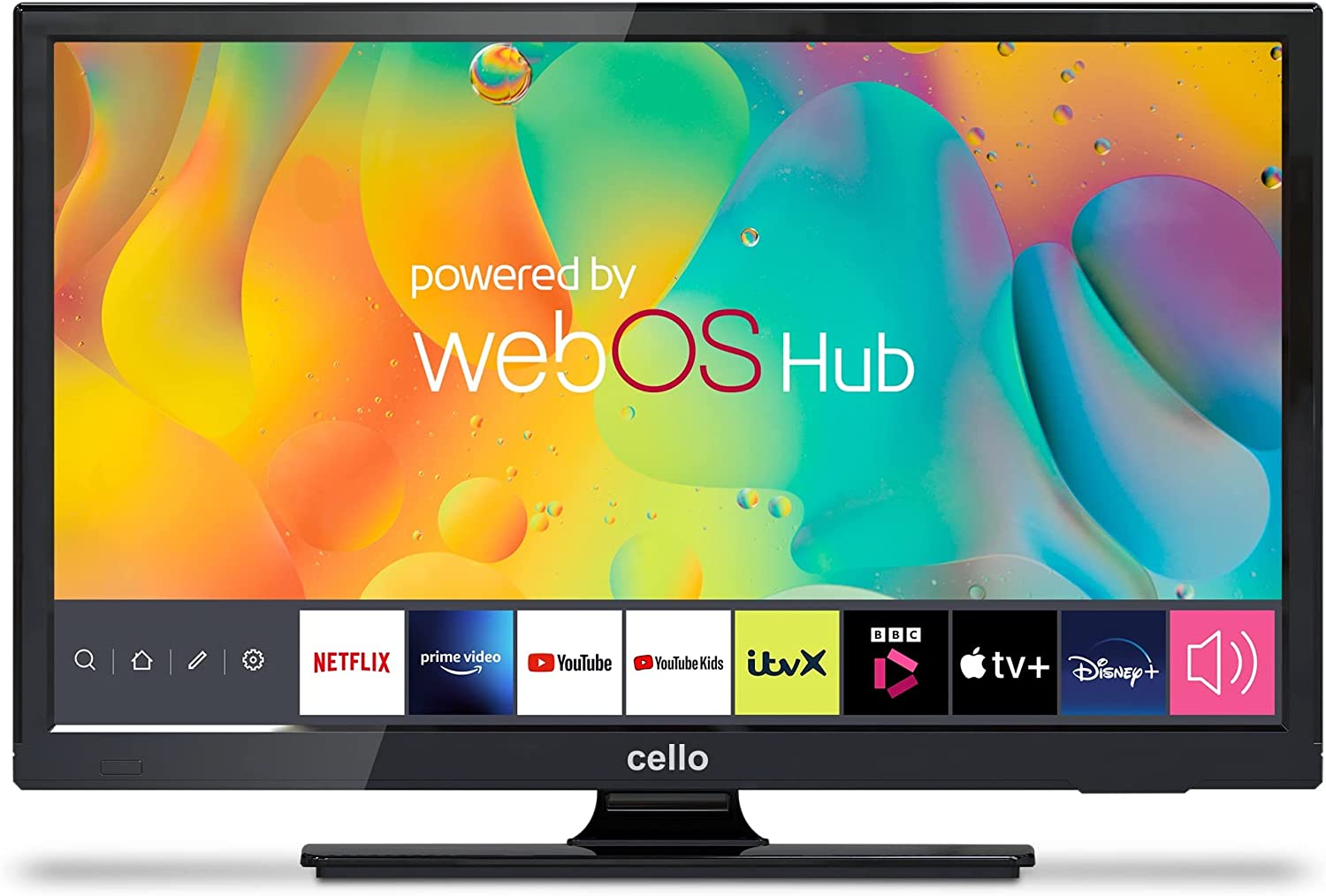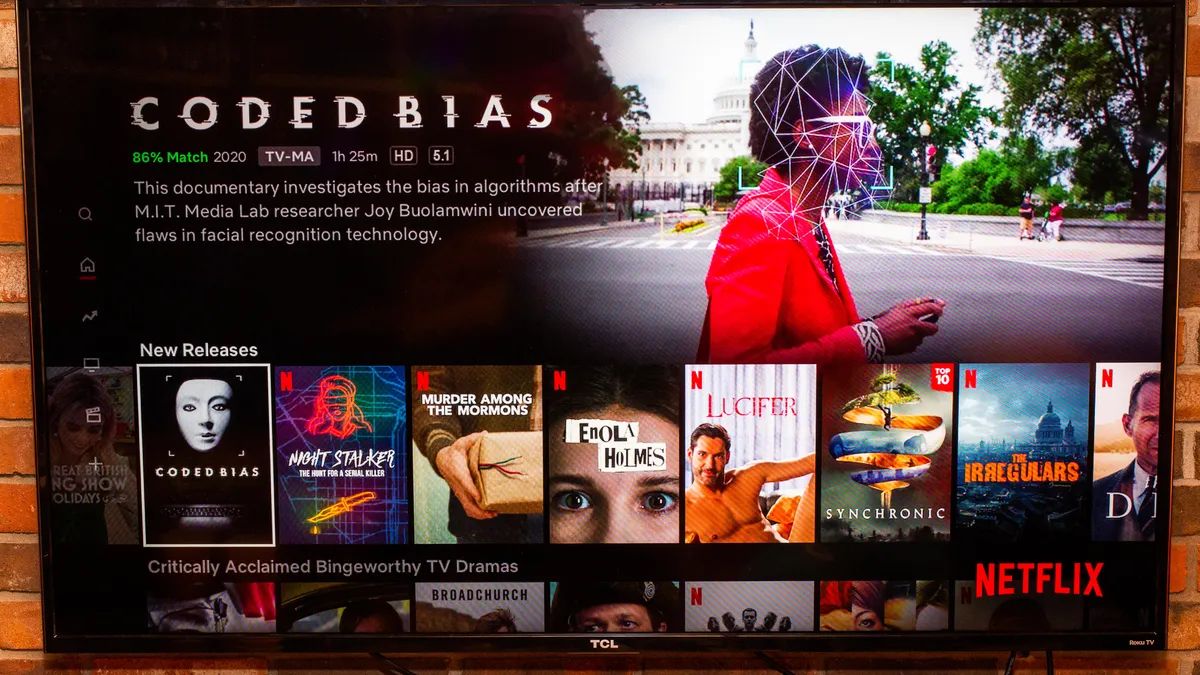Introduction
Welcome to our guide on how to cast DVD on Chromecast. With the rise of streaming services, many people have transitioned away from physical media such as DVDs. However, if you still have a collection of DVDs that you’d like to enjoy on your big screen TV, casting them to your Chromecast can be a convenient solution.
Chromecast, developed by Google, is a small streaming device that plugs into your TV’s HDMI port. It allows you to wirelessly stream content from your smartphone, tablet, or computer directly to your TV. While Chromecast was primarily designed for streaming services like Netflix and YouTube, with a little know-how, you can also cast your DVD collection.
DVD casting refers to the process of wirelessly transmitting DVD media from your device to your Chromecast-connected TV. By casting your DVD, you can enjoy your favorite movies or TV shows on a larger screen without the need for a separate DVD player.
Now you might be wondering how DVD casting on Chromecast actually works. Well, in order to cast a DVD, you’ll need to set up your Chromecast device, connect it to your Wi-Fi network, and then use a compatible device such as a computer, Android device, or iOS device to initiate the casting process.
In this guide, we’ll walk you through the steps to set up your Chromecast for DVD casting and provide instructions for casting DVDs from various devices. We’ll also address some common troubleshooting issues that you may encounter along the way.
So, if you’re ready to dust off those old DVDs and cast them to your TV with Chromecast, let’s get started!
What is Chromecast?
Chromecast is a popular streaming device developed by Google that allows you to wirelessly stream content from your preferred devices to your TV. It’s a small dongle that plugs into your TV’s HDMI port, turning your regular TV into a smart TV.
The main purpose of Chromecast is to provide a convenient way to stream media from your smartphone, tablet, or computer onto a larger screen. It acts as a bridge between your devices and your TV, enabling you to enjoy your favorite movies, TV shows, music, and even games on the big screen.
One of the great advantages of Chromecast is its compatibility with multiple devices and platforms. Whether you’re using an Android device, an iOS device, or a computer running Windows, macOS, or Chrome OS, you can easily set up and use Chromecast.
Chromecast operates using the concept of “casting.” When you cast media from your device to your TV through Chromecast, you’re essentially streaming the content from the source device to the Chromecast device, which then displays it on your TV. This means that once the media is being cast, you can continue using your device for other tasks without interrupting the playback.
Chromecast supports a wide range of streaming services, including popular platforms like Netflix, Hulu, YouTube, Spotify, and more. It also allows you to mirror the screen of your device onto the TV, which is useful for sharing photos, presentations, or any other content that you want to showcase on a larger display.
Additionally, Chromecast can be controlled through a dedicated app called Google Home, which offers a user-friendly interface for managing your media streaming and smart home devices. With Google Home, you can easily set up and configure your Chromecast, customize its settings, and explore additional features and apps that are compatible with the device.
In summary, Chromecast is a versatile streaming device that brings the convenience of wireless casting to your TV. Whether you want to stream movies, play music, or mirror your device’s screen, Chromecast offers a user-friendly and affordable solution for transforming your television into a multimedia hub.
What is DVD casting?
DVD casting is the process of wirelessly transmitting DVD content from your device to your television using a Chromecast device. It allows you to enjoy your DVD collection on a bigger screen without the need for a separate DVD player.
In the past, watching DVDs required a DVD player connected to your TV. However, with advancements in technology and the popularity of streaming devices like Chromecast, DVD casting has become a convenient alternative. It allows you to cast the DVD media directly from your device, such as a computer, smartphone, or tablet, to your television.
When you cast a DVD, the content is streamed from your device to the Chromecast device connected to your TV. The Chromecast acts as a bridge, receiving the DVD content from your device’s media player and transmitting it to your television. This enables you to enjoy your favorite movies, TV shows, or other DVD content on a larger screen and with the comfort and convenience of wireless streaming.
It’s important to note that DVD casting requires a few additional steps compared to streaming from online sources like Netflix or YouTube. Since DVDs are physical media that need to be read and played by a media player, you need to use a device capable of reading the DVD and transmitting the content to the Chromecast.
The DVD casting process involves setting up your Chromecast device, connecting it to your Wi-Fi network, and using a compatible device with a DVD drive or DVD player software to initiate the casting. Once the casting is initiated, the DVD content is streamed to the Chromecast, which then displays it on your TV screen.
It’s worth mentioning that DVD casting on Chromecast is not limited to commercially available DVDs. If you have homemade DVDs or personal video collections stored on DVD discs, you can also cast them using the same process. This allows you to share precious memories and family videos with others on a larger screen without the need for physical DVD players or connecting devices via cables.
In summary, DVD casting is the wireless transmission of DVD content from your device to your TV using Chromecast. It provides a convenient way to enjoy your DVD collection on a bigger screen using the power of wireless streaming technology.
How does DVD casting on Chromecast work?
DVD casting on Chromecast involves a set of steps that allow you to wirelessly transmit DVD content from your device to your television. It utilizes the features and capabilities of both the Chromecast device and your casting device.
Here’s how DVD casting on Chromecast typically works:
- Setup Chromecast: Start by connecting your Chromecast device to your television’s HDMI port. Follow the setup instructions provided with the device to connect it to your Wi-Fi network. Make sure your casting device, whether it’s a computer, Android device, or iOS device, is connected to the same Wi-Fi network as your Chromecast.
- Launch a DVD player or media player software: On your casting device, open a DVD player or media player software that is compatible with Chromecast. This can be a built-in DVD player software on your computer or a third-party media player app on your smartphone or tablet. Make sure the DVD is inserted into the device or the media player software is set up to read the DVD content.
- Initiate casting: In the DVD player or media player software, look for the casting icon, which is usually denoted by the Chromecast symbol. Click or tap on the casting icon to start the casting process.
- Select the Chromecast device: A list of available Chromecast devices will appear on your casting device’s screen. Choose the Chromecast device that is connected to your television.
- Start DVD playback: Once you’ve selected the Chromecast device, the DVD content will be streamed from your casting device to the Chromecast. The DVD player or media player software will start playing the DVD content, and it will be displayed on your television screen.
During the casting process, your casting device serves as the control center, sending commands and instructions to the Chromecast device. The Chromecast device receives the DVD content from your casting device and displays it on your television screen. You can control the playback, pause, and adjust the volume using the controls on your casting device.
It’s important to note that DVD casting on Chromecast requires a stable Wi-Fi connection between your casting device, Chromecast, and the DVD player or media player software. If the Wi-Fi connection is weak or interrupted, it may result in buffering, lag, or a loss of connection.
In summary, DVD casting on Chromecast works by connecting your Chromecast device to your television, launching a DVD player or media player software on your casting device, initiating the casting process, selecting the Chromecast device, and streaming the DVD content from your casting device to the Chromecast. This allows you to enjoy your DVD collection on a larger screen with the convenience of wireless streaming.
Setting up your Chromecast for DVD casting
In order to cast DVDs to your Chromecast, you’ll first need to set up your Chromecast device and connect it to your Wi-Fi network. Here’s a step-by-step guide to help you get started:
- Unbox and connect the Chromecast: Start by unboxing your Chromecast device and plugging it into an available HDMI port on your TV. Ensure that you also connect the Chromecast to a power source using the included USB cable and power adapter.
- Switch to the right input: Use your TV’s remote control to switch to the HDMI input that corresponds to the port where you connected the Chromecast. You should see the Chromecast setup screen on your TV.
- Download the Google Home app: On your casting device, whether it’s a computer, Android device, or iOS device, download and install the Google Home app from the respective app store.
- Open the Google Home app: Launch the Google Home app and follow the on-screen instructions to set up your Chromecast. Make sure your casting device is connected to the same Wi-Fi network that you want to connect your Chromecast to.
- Connect your Chromecast to the Wi-Fi network: During the setup process, the Google Home app will detect your Chromecast and guide you through the process of connecting it to your Wi-Fi network. Follow the prompts and enter your Wi-Fi network’s credentials when prompted.
- Customize Chromecast settings (optional): Once your Chromecast is connected to your Wi-Fi network, you can customize its settings. You can give your Chromecast a unique name, choose from different backdrop images, enable guest mode, and more.
- Update firmware (if necessary): It’s a good idea to ensure that your Chromecast is running the latest firmware. The Google Home app will automatically check for updates and prompt you to install them if there are any available.
Once you’ve completed the setup process, your Chromecast is ready to cast DVDs from your device to your TV. Simply follow the instructions in the DVD casting section of this guide, specific to your casting device (computer, Android, or iOS), to start casting your DVD content.
It’s important to note that the setup process may vary slightly depending on the model of your Chromecast and the version of the Google Home app. However, the general steps outlined above should be applicable to most Chromecast devices.
With your Chromecast properly set up, you can now enjoy the convenience of casting your DVD collection to your TV. Whether it’s a classic movie, a TV series, or personal videos, you can relive the magic of DVDs on the big screen with the help of your Chromecast.
Casting DVD using a computer
If you want to cast DVDs to your Chromecast using a computer, follow these steps:
- Ensure compatibility: Make sure your computer has a DVD drive and is capable of playing DVD content. If your computer doesn’t have a built-in DVD drive, you can connect an external DVD player to it.
- Connect Chromecast and computer to the same Wi-Fi network: Ensure that both your Chromecast and computer are connected to the same Wi-Fi network. This is crucial for successful DVD casting.
- Open a DVD player software: Launch a DVD player software on your computer. Some popular options include VLC Media Player, Windows Media Player, and PowerDVD. If you don’t have a DVD player software installed, download and install one from a reliable source.
- Insert the DVD: Insert the DVD into your computer’s DVD drive. The DVD player software should automatically detect the DVD and start playing it.
- Initiate casting: Look for the casting icon within the DVD player software. It could be located in the toolbars, control panels, or playback settings. Click on the casting icon to start the casting process.
- Select Chromecast device: A list of available casting devices will appear. Choose your Chromecast device from the list.
- Enjoy DVD on the big screen: The DVD content will be streamed from your computer to the Chromecast device connected to your TV. You will now be able to watch the DVD on your TV screen.
- Control playback: Use the controls within the DVD player software on your computer to manage the playback. You can pause, adjust the volume, skip chapters, or navigate through the DVD menu.
During the casting process, your computer acts as the source device, reading the DVD content and transmitting it to the Chromecast. The Chromecast then displays the DVD content on your TV screen.
It’s essential to note that the DVD casting process may vary slightly depending on the DVD player software you are using. The location of the casting icon or the specific steps to initiate casting may differ. Ensure to consult the documentation or help resources of the specific DVD player software for detailed instructions.
Casting DVDs using a computer and Chromecast allows you to enjoy your DVD collection on a larger screen without the need for additional hardware or cables. Whether it’s a movie night, a family gathering, or a personal watch party, casting DVDs using a computer and Chromecast enhances the viewing experience and brings your favorite DVDs to life on the big screen.
Casting DVD using an Android device
If you’re an Android user and want to cast DVDs to your Chromecast, follow these steps:
- Ensure compatibility: Make sure your Android device is capable of playing DVD content. If your device doesn’t have a DVD drive, you won’t be able to directly play DVDs. However, you can still cast DVDs from your computer using the steps outlined in the “Casting DVD using a computer” section.
- Connect Chromecast and Android device to the same Wi-Fi network: Ensure that both your Chromecast and Android device are connected to the same Wi-Fi network. This is crucial for successful DVD casting.
- Install a DVD player app: Download and install a DVD player app from the Google Play Store. There are several options available, such as VLC for Android, BSPlayer, and MX Player.
- Launch the DVD player app: Open the DVD player app on your Android device. It will prompt you to grant necessary permissions, such as accessing media files on your device.
- Select the DVD: In the DVD player app, locate the option to open or play a DVD. You may need to navigate through your device’s storage or select the DVD drive if your Android device has one.
- Initiate casting: Look for the casting icon within the DVD player app. It is usually represented by the Chromecast logo or the words “Cast” or “Mirror.” Tap on the casting icon to start the casting process.
- Select Chromecast device: A list of available Chromecast devices will appear on your Android device’s screen. Choose the Chromecast device that is connected to your TV.
- Enjoy DVD on the big screen: The DVD content will be streamed from your Android device to the Chromecast device connected to your TV. You can now watch the DVD on your TV screen.
- Control playback: Use the controls within the DVD player app on your Android device to manage the DVD playback. You can pause, adjust the volume, skip chapters, or navigate through the DVD menu.
During the casting process, your Android device acts as the source device, reading the DVD content and transmitting it to the Chromecast. The Chromecast then displays the DVD content on your TV screen.
It’s important to note that the DVD casting process may vary slightly depending on the specific DVD player app you are using. The location of the casting icon or the specific steps to initiate casting may differ. Refer to the documentation or help resources of the specific DVD player app for detailed instructions.
Casting DVDs using an Android device and Chromecast provides a seamless way to enjoy your DVD collection on a larger screen. Whether you’re hosting a movie night, sharing videos with friends, or simply want to relive your favorite DVDs, the combination of an Android device and Chromecast offers a convenient and immersive viewing experience.
Casting DVD using an iOS device
If you’re an iOS user and want to cast DVDs to your Chromecast, follow these steps:
- Ensure compatibility: Make sure your iOS device is capable of playing DVD content. If your device doesn’t have a DVD drive, you won’t be able to directly play DVDs. However, you can still cast DVDs from your computer using the steps outlined in the “Casting DVD using a computer” section.
- Connect Chromecast and iOS device to the same Wi-Fi network: Ensure that both your Chromecast and iOS device are connected to the same Wi-Fi network. This is crucial for successful DVD casting.
- Choose a DVD player app: Download and install a DVD player app from the App Store. There are several options available, such as VLC for Mobile, Infuse, and PlayerXtreme.
- Launch the DVD player app: Open the DVD player app on your iOS device. It will prompt you to grant necessary permissions, such as accessing media files on your device.
- Select the DVD: In the DVD player app, locate the option to open or play a DVD. Depending on the app, you may need to navigate through your device’s storage or select the DVD drive if your iOS device has one.
- Initiate casting: Look for the casting icon within the DVD player app. This icon is usually represented by the Chromecast logo or the words “Cast” or “Mirror.” Tap on the casting icon to start the casting process.
- Select Chromecast device: A list of available Chromecast devices will appear on your iOS device’s screen. Choose the Chromecast device that is connected to your TV.
- Enjoy DVD on the big screen: The DVD content will be streamed from your iOS device to the Chromecast device connected to your TV. Now you can watch the DVD on your TV screen.
- Control playback: Use the controls within the DVD player app on your iOS device to manage the DVD playback. You can pause, adjust the volume, skip chapters, or navigate through the DVD menu.
During the casting process, your iOS device acts as the source device, reading the DVD content and transmitting it to the Chromecast. The Chromecast then displays the DVD content on your TV screen.
It’s important to note that the DVD casting process may vary slightly depending on the specific DVD player app you are using. The location of the casting icon or the specific steps to initiate casting may differ. Refer to the documentation or help resources of the specific DVD player app for detailed instructions.
Casting DVDs using an iOS device and Chromecast provides a seamless way to enjoy your DVD collection on a larger screen. Whether you’re hosting a movie night, sharing videos with friends, or simply want to relive your favorite DVDs, the combination of an iOS device and Chromecast offers a convenient and immersive viewing experience.
Troubleshooting common issues
While casting DVDs to your Chromecast can be a convenient way to enjoy your collection on a bigger screen, you may encounter some common issues along the way. Here are some troubleshooting tips to help you resolve these issues:
No casting icon: If you don’t see the casting icon in your DVD player software or media player app, make sure that your Chromecast device is properly connected to the same Wi-Fi network as your casting device. Additionally, check if your DVD player software or media player app is updated to the latest version.
Buffering or lag: If you experience buffering or lag during DVD casting, it could be due to a weak Wi-Fi signal or network congestion. Ensure that your Chromecast and casting device are in close proximity to your Wi-Fi router, and consider reducing the number of devices connected to your network to improve bandwidth allocation.
Audio or video out of sync: If the audio and video are not syncing properly when casting DVDs, try pausing the DVD playback for a moment, then resume it. Alternatively, you can disconnect and reconnect the casting session to reestablish synchronization between the audio and video streams.
Poor video quality: If the DVD playback quality is not satisfactory, it might be due to your internet connection or the resolution settings of your Chromecast. To improve the video quality, try connecting your Chromecast to a more stable Wi-Fi network or adjust the video resolution settings in the Google Home app.
Device compatibility: Ensure that your casting device (computer, Android device, or iOS device) meets the necessary requirements for DVD casting. Check if your device has a DVD drive (for computers) or is capable of playing DVDs (for Android and iOS devices). If your device doesn’t have built-in DVD playback capabilities, consider using a separate DVD player connected to your device for casting.
Update software: Keep your Chromecast device, casting device, DVD player software, and media player app up to date with the latest software versions. Regularly check for updates and install them to benefit from bug fixes, performance improvements, and new features that can enhance your DVD casting experience.
If you encounter any other issues not mentioned here, consult the documentation or support resources for your specific Chromecast device, casting device, DVD player software, or media player app. Additionally, consider visiting online forums or communities where users share their experiences and troubleshooting tips for DVD casting.
By following these troubleshooting tips, you can address common issues and ensure a smooth and enjoyable DVD casting experience. Don’t let technical glitches dampen your movie nights – with a little troubleshooting, you’ll be back to casting your DVDs flawlessly in no time!
Conclusion
Casting DVDs on Chromecast brings a new level of convenience to enjoying your DVD collection on the big screen. With just a few steps, you can wirelessly stream your favorite movies and TV shows from your computer, Android device, or iOS device to your television.
In this guide, we discussed the concept of DVD casting, which involves transmitting DVD content from your device to your Chromecast-connected TV. We explored how Chromecast works and learned about the setup process to prepare your Chromecast for DVD casting.
We also covered the specific steps for casting DVDs using a computer, Android device, and iOS device. From launching DVD player software to initiating the casting process, you now have a clear understanding of how to cast DVDs to your Chromecast from different devices.
Additionally, we addressed common troubleshooting issues you may encounter during the DVD casting process. By following the troubleshooting tips provided, you can overcome challenges such as buffering, out-of-sync audio and video, and poor video quality.
So, whether you’re having a movie night with friends, reliving your favorite DVDs, or showcasing personal videos on the big screen, DVD casting on Chromecast offers a convenient and immersive viewing experience.
Remember, the key to successful DVD casting is to ensure that your Chromecast and casting device are on the same Wi-Fi network, your DVD player software or media player app is compatible with Chromecast, and your internet connection is stable.
Now that you have the knowledge and know-how, it’s time to dust off those old DVDs and cast them to your Chromecast-connected TV. Start enjoying your DVD collection in a whole new way!







